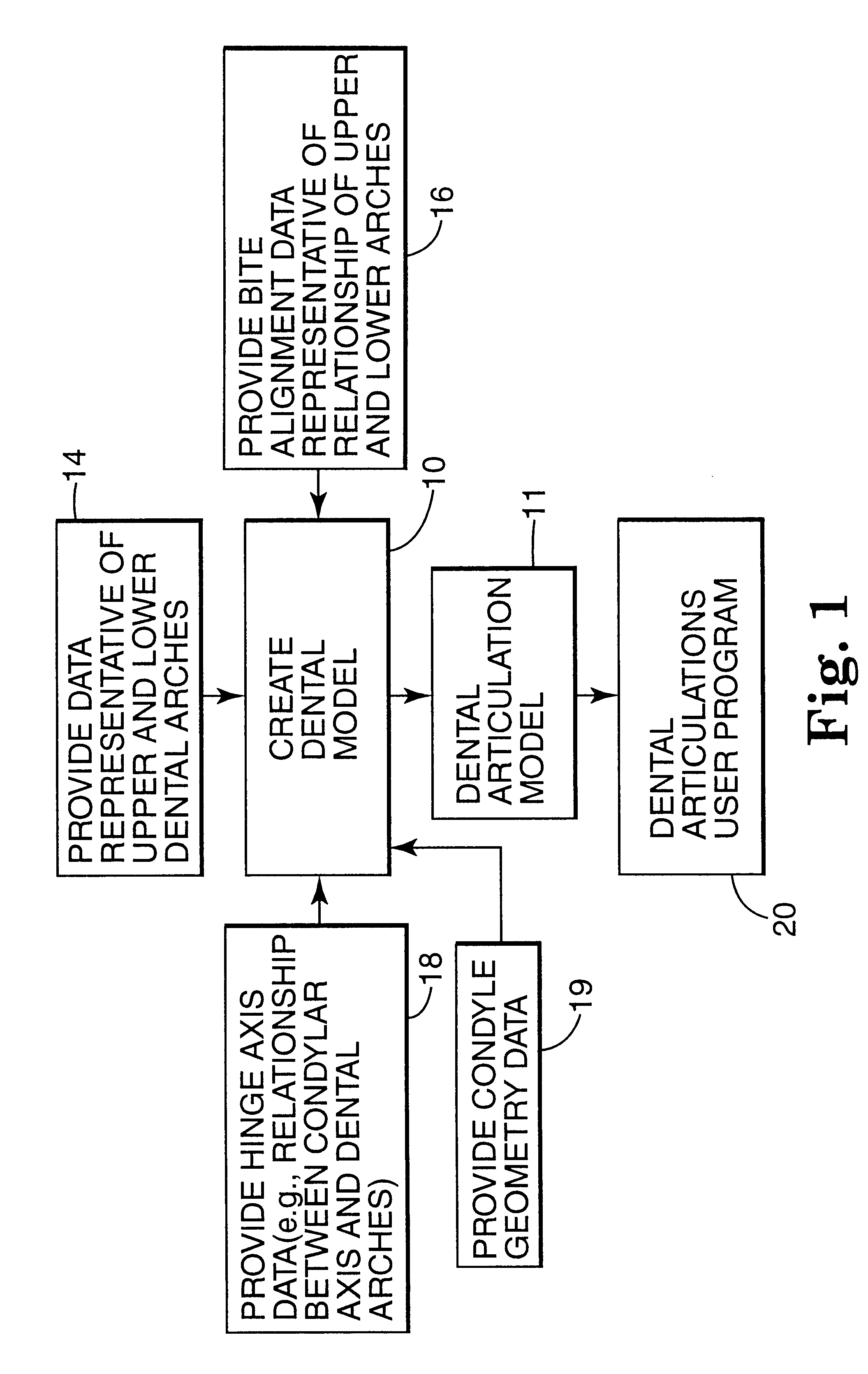Methods for use in dental articulation
a technology for dental articulation and articulation, applied in the field of dental articulation, can solve the problems of time-consuming articulation technique, high cost of mechanical articulators, and other mechanical articulators that are more complex
- Summary
- Abstract
- Description
- Claims
- Application Information
AI Technical Summary
Benefits of technology
Problems solved by technology
Method used
Image
Examples
Embodiment Construction
The present invention shall be described generally with reference to FIGS. 15. Thereafter, the present invention shall be described in further detail with reference to FIGS. 6-16.
As used herein, the terms given below are defined as follows. Bite registration is defined as the location of the upper and lower dental arches of a patient in occlusion (e.g., maximum intercuspation). The occlusal relationship may be based on first point of contact or based on other degrees of interdigitation of the upper and lower dental arches such as interdigitation for providing maximum intercuspation or to a controlled point of contact between the upper and lower dental arches which avoids mandibular shifting (e.g., shifting which may be due to occlusal prematurity).
Articulation is defined as bite registration in addition to the relationship of the upper and lower dental arches to the condyle axis of the patient. Articulation may occur either as simple hinge motion (i.e., simple hinge articulation) ab...
PUM
 Login to View More
Login to View More Abstract
Description
Claims
Application Information
 Login to View More
Login to View More - R&D
- Intellectual Property
- Life Sciences
- Materials
- Tech Scout
- Unparalleled Data Quality
- Higher Quality Content
- 60% Fewer Hallucinations
Browse by: Latest US Patents, China's latest patents, Technical Efficacy Thesaurus, Application Domain, Technology Topic, Popular Technical Reports.
© 2025 PatSnap. All rights reserved.Legal|Privacy policy|Modern Slavery Act Transparency Statement|Sitemap|About US| Contact US: help@patsnap.com



